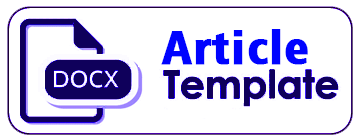Article Retraction & Withdrawal
The SIMAKS journal, like most academic journals, has specific guidelines related to article retraction and withdrawal to maintain the integrity of the published content. While the full details are typically found on their website, here are general practices that many journals follow regarding these issues:
Article Retraction:
An article is usually retracted in the following cases:
-
Scientific misconduct: If it is discovered that the research involved data fabrication, falsification, or plagiarism.
-
Error in the published work: If there is a significant error in the article that invalidates the conclusions, and the author(s) or publisher determines that the correction or update cannot be made through an erratum or corrigendum.
-
Ethical violations: If the research or the publication violates ethical guidelines, such as issues with participant consent, animal welfare, or conflicts of interest.
-
Legal issues: If the publication infringes upon copyright or other legal regulations.
When an article is retracted, the journal typically publishes a retraction notice explaining the reason for retraction and the nature of the problem, ensuring transparency.
Article Withdrawal:
Articles can be withdrawn before they are formally published if:
-
Author request: The author requests to withdraw their article before it’s officially published, typically due to personal or professional reasons. The author must follow the proper procedure and provide a valid reason for the withdrawal.
-
Submission error: If the article was submitted mistakenly (for example, submitting to the wrong journal).
In these cases, the journal may remove the article from their website or archives. Some journals also specify a deadline after which an article can no longer be withdrawn from the review or publication process.
Procedure:
-
Authors who wish to retract or withdraw a paper generally need to submit a formal request to the journal’s editorial board, explaining the reasons for the retraction or withdrawal.
-
Once the decision is made, the journal may publish a notice of withdrawal or retraction to inform readers and ensure the integrity of the scientific record.
For the precise procedure and specific cases, it's always a good idea to refer to SIMAKS's official "Article Retraction and Withdrawal" guidelines, which are usually outlined in their Publication Ethics or Author Guidelines sections.





